#rhododendron arborescens
Photo
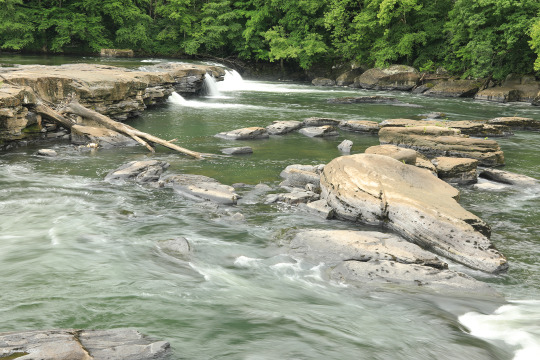
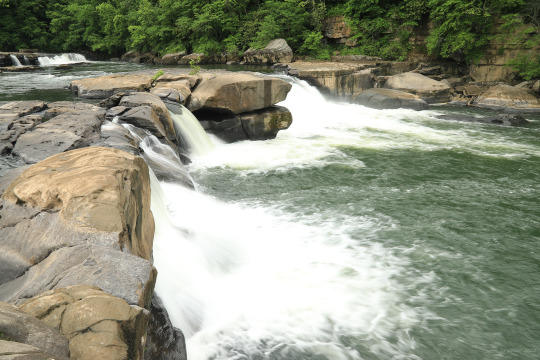

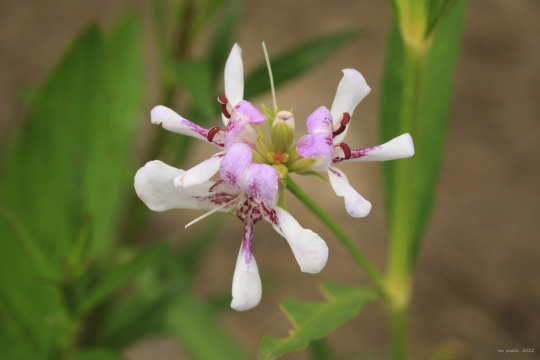
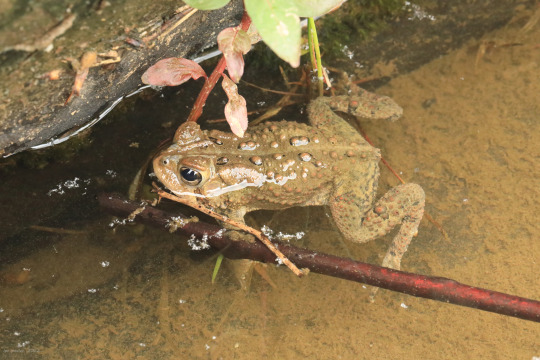
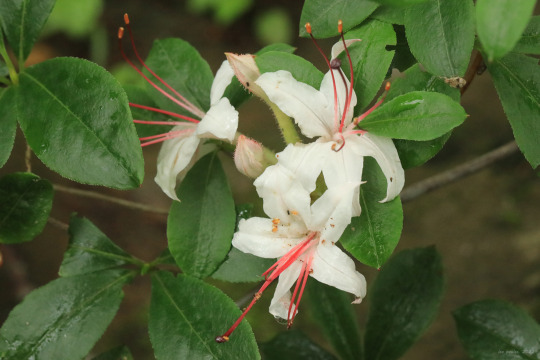

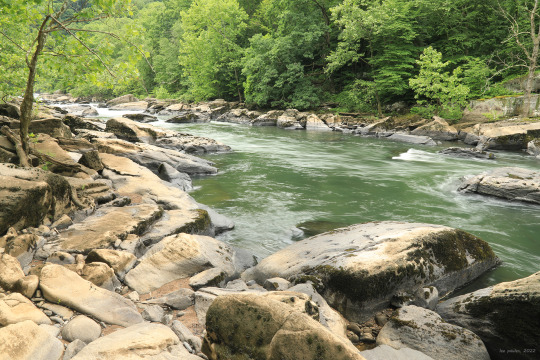

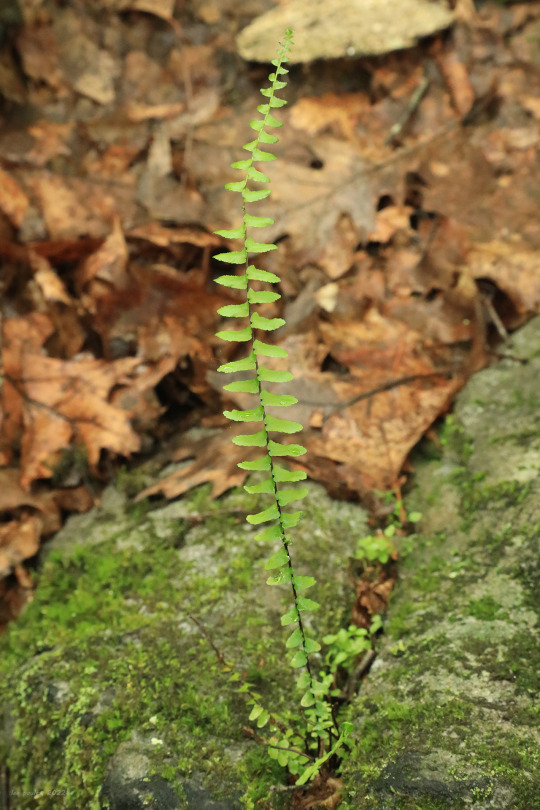
Valley Falls State Park is best known for the dramatic cascades and rapids formed by the Tygart Valley River as it “squeezes” through a narrow gorge on the way to its eventual confluence with the Monongahela River in Fairmont. The park was once the site of a grist mill in the mid-1800s, but the only evidence remaining today is a spillway, a grinding stone, and an abandoned quarry, now overtaken by forest. Falls notwithstanding, I’m ever in awe of the massive slabs of Upper Connoquenessing sandstone piled up on either side of the river - they provide both a testament to earth’s prehistoric past and an amazing riparian zone of rocky pools and sandy embankments where seeds from farther upstream can deposit and take root, providing homes to many uniquely-adapted species.
From top: American water willow (Justicia americana), a showy aquatic perennial that forms large colonies in the shallow riffles of streams; an eastern American toad (Anaxyrus americanus americanus), which was busy croaking and making babies in a rocky pool near the falls; sweet azalea (Rhododendron arborescens), also known as smooth azalea, a rangy, stream-loving shrub whose strongly-scented, white flowers have distinctive red stamens; yellow star grass (Hypoxis hirsuta), an exquisite riparian member of the lily family that clumps on the moist, sandy banks of fast-moving streams; royal fern (Osmunda regalis), a spectacularly beautiful fern that loves the nooks between the boulders at the river’s edge; and ebony spleenwort (Asplenium platyneuron), also known as brownstem spleenwort, an elegant, upright fern with a special fondness for the same rocky nooks.
#appalachia#vandalia#west virginia#tygart valley river#valley falls state park#waterfalls#rapids#riparian#connoquenessing sandstone#geology#spring#wildflowers#flora#amphibian#toad#anaxyrus americanus#american toad#justicia americana#american water willow#rhododendron arborescens#sweet azalea#smooth azalea#hypoxis hirsuta#yellow star grass#osmunda regalis#royal fern#asplenium platyneuron#ebony spleenwort#brownstem spleenwort
172 notes
·
View notes
Text

Rhododendron arborescens x prunifolium 'Summer Lyric' / 'Summer Lyric' Azalea at the Sarah P. Duke Gardens at Duke University in Durham, NC
#Rhododendron arborescens x prunifolium 'Summer Lyric'#Rhododendron arborescens x prunifolium#Rhododendron arborescens#Rhododendron prunifolium#Summer Lyric Azalea#Hybrid Azalea#Native plants#Native flowers#Nativar#Nature photography#Flowers#Azalea#Sweet azalea#Smooth azalea#Rhododendron#Sarah P. Duke Gardens#Duke Gardens#Duke University#Durham NC#Durham#North Carolina
0 notes
Text
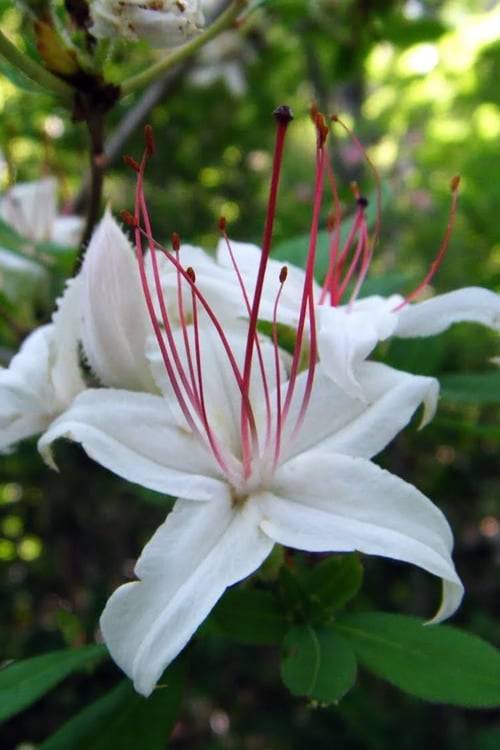
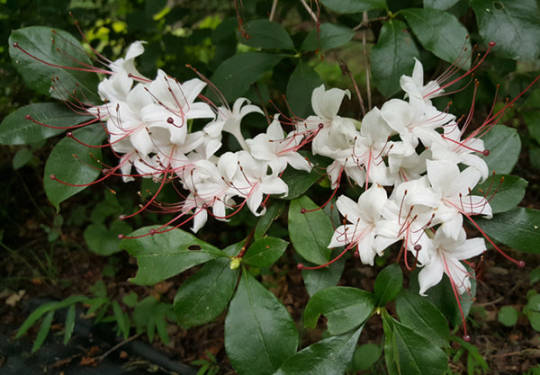
Sweet Azaleas Rhododendron arborescens
0 notes
Text
What İs The Botanical Name For Sweet Azalea?

Did you know that the sweet azalea, also known as Rhododendron arborescens, is a deciduous shrub native to North America? This shrub is characterized by its white flowers and leaves. Rhododendron arborescens is just one of the many plants in the Rhododendron genus.
The sweet azalea, also known as azalea arborescens, is a stunning flowering plant with vibrant white flowers that adds beauty to gardens and landscapes. It's vibrant blooms and delightful fragrance makes it a popular choice among garden enthusiasts who appreciate the beauty of shrubs and many plants. If you're new to the world of gardening or exploring different plant species, understanding botanical names like Rhododendron arborescens can help identify plants by their leaves.
In this glossary, we'll delve into the intriguing world of plants and discover more about the sweet azalea, a stunning flower known for its beautiful blooms and lush leaves. So let's dive in and unravel the secrets behind Rhododendron arborescens, a shrub that captivates with its vibrant flowers and foliage!
The Native Status of Sweet Azalea and Its Importance

Sweet azalea, also known as Rhododendron arborescens, is a native shrub found in the eastern United States, particularly in the Appalachian Mountains. This flowering plant blooms with vibrant flowers and lush leaves, thriving in the local climate and ecosystem.
The native status of sweet azalea is important due to its role in supporting local wildlife. Native plants like sweet azalea provide food and shelter for various animals, including birds, butterflies, and bees. This helps maintain the delicate balance of the ecosystem by supporting flower pollination and controlling pests like aphids and other insects.
Moreover, the sweet azalea flower's native status contributes to the preservation of biodiversity by coexisting with other indigenous species. When an area is dominated by non-native species, it can disrupt the natural diversity of plant life and hinder growth. By contrast, native plants like sweet azalea enhance biodiversity and deter pests such as aphids.
Sweet azalea's adaptability to the local environment makes it more resilient to climatic conditions and pests such as aphids, whiteflies, and other harmful insects. This resilience reduces the need for excessive maintenance or chemical interventions typically required for non-native plants.
Common Names: Smooth Azalea, Sweet Azalea

Besides being known as sweet azalea, this flower also goes by the common names smooth azalea or swamp honeysuckle. These common names reflect different characteristics or habitats where the plant can be found. Using various common names helps people identify sweet azaleas based on different regional preferences. The flowers of sweet azalea attract aphids, while its leaves require regular watering.
-
The smooth azalea, also known as plant tissue, is a popular name for this botanical species. Its leaves are known for their sweet substance, which is derived from the soil.
-
Another common name for this plant is sweet azalea, known for its pleasant fragrance. The plant's leaves, soil, and water are essential factors for its growth and control.
-
Swamp honeysuckle, also known as native azalea or azalea arborescens, is another term used to describe this flowering shrub. It produces a sweet substance within its plant tissue.
-
Each of these names, including azalea arborescens, native azalea, and swamp azalea, provides a unique perspective on the plant's attributes and environments, such as its leaves.
-
The smooth azalea, with its sleek appearance and velvety texture, is known for its leaves, which are nourished by the sweet substance found in the soil and water.
-
Sweet azalea, known for its delightful scent, fills the air with its fragrance when in bloom. This flowering shrub thrives in well-drained soil and requires regular watering to flourish.
-
Swamp honeysuckle denotes its preference for moist, swampy habitats.
These alternate names, such as smooth azalea and swamp honeysuckle, are useful when discussing or searching for information about sweet azaleas. They help differentiate it from other types of azaleas and ensure accurate identification. Whether you call it smooth azalea, sweet azalea, or swamp honeysuckle, this botanical beauty remains a stunning addition to any garden, thriving in both water and soil.
Variations and Synonyms of Sweet Azalea

Sweet azaleas, also known as water-loving azaleas, thrive in moist soil. These delightful plants display slight differences in appearance or historical naming conventions. Let's explore some of the variations and synonyms associated with this water-loving and soil-dependent plant.
Variation/Cultivar
Description
'Burgundy Lace
This sweet azalea variation boasts delicate burgundy blooms that add a touch of elegance to any garden, especially when planted in nutrient-rich soil.
'Swamp azalea Roseum'
With its charming rose-colored flowers, this cultivar adds a romantic flair to outdoor spaces with its ability to thrive in various soil types.
Synonym
Description
Rhodora viscose
Plants similar to azaleas that thrive in conducive soil
Rhodora canadensis
Synonym for sweet azaleas, denoting their Canadian origins in the soil
Azalia viscose
Sweet azaleas with a sticky nature caused by the soil
These variations and synonyms showcase the diverse range of names given to this captivating plant. Each name provides a unique perspective on its soil attributes and origins.
Whether you prefer the enchanting 'Burgundy Lace' or the romantic allure of 'Roseum,' these soil variations offer an array of options for garden enthusiasts seeking a touch of sweetness. Similarly, soil synonyms like Rhodora viscose, Rhodora canadensis, and Azalia viscose serve as alternative labels that highlight different aspects of this beloved soil species.
Best Companion Plants for Sweet Azalea
Sweet azaleas thrive in the right soil when accompanied by the right plants. Here are some excellent companion options to enhance their beauty and promote healthy soil.
-
Adding ferns to your garden alongside sweet azaleas creates a stunning contrast in foliage textures. These shade-loving plants bring a touch of elegance and grace, perfectly complementing the vibrant blooms of the azaleas. The soil is essential for the growth of both ferns and azaleas.
-
Hostas: Known for their lush and attractive leaves, hostas make an ideal companion for sweet azaleas. Their broad foliage provides a backdrop that emphasizes the delicate flowers of the azalea. Together, they create a visually appealing display that will captivate any observer. The soil is crucial for the growth of both hostas and azaleas.
-
Astilbes: Another great choice to pair with sweet azaleas is astilbes. These perennial plants produce feathery plumes of flowers in various colors, adding depth and dimension to your soil. The softness of astilbe blooms beautifully contrasts with the boldness of azalea blossoms.
Choosing suitable companion plants ensures harmonious growth patterns and a visually appealing garden overall. By combining ferns, hostas, and astilbes with sweet azaleas in fertile soil, you can create an enchanting landscape that pleases both the eye and the soul.
When planning your next gardening project, remember to consider these companion plants. They will undoubtedly elevate the beauty of your sweet azaleas while providing an exquisite tapestry of colors and textures in your outdoor space. Don't forget to choose the right soil for optimal growth.
Fragrant Azaleas and Rhododendrons for a Garden Retreat
Fragrant azaleas, such as the sweet azalea, are a delightful addition to any garden soil. These beautiful flowers not only add vibrant colors but also fill the air with an enchanting aroma. Alongside sweet azaleas, other fragrant rhododendron species like R. luteum and R. occidentale can further enhance your garden soil retreat.
When planting fragrant varieties like azaleas and rhododendrons in nutrient-rich soil, you create a sensory haven that invigorates the senses. The combination of their captivating scents and stunning blooms makes for an irresistible garden experience.
Here are some key points to consider when incorporating fragrant azaleas and rhododendrons into your garden soil.
-
Sweet Azalea (Rhododendron arborescens) is a deciduous shrub that thrives in soil. It boasts clusters of white flowers with green leaves and red stamens. Its delicate fragrance adds a touch of elegance to any outdoor space.
-
Expand your aromatic garden by including fragrant Rhododendron species that thrive in different types of soil. Consider R. luteum, known for its yellow blossoms, or R. occidentale with its lovely pink flowers.
-
Planting Choices: Consider mixing fragrant flowers with other plants in your garden to create a diverse landscape that offers various scents throughout the year. This will help improve the health of your soil.
-
Blooming Season: Be mindful of each plant's blooming season to ensure a continuous display of fragrance in your garden's soil.
-
Care and Maintenance: Provide these shrubs with proper care, including regular watering, adequate sunlight, appropriate pruning techniques, and ensuring healthy soil.
Transform your garden into a serene retreat by introducing fragrant azaleas and rhododendrons. These beautiful flowers will not only add beauty to every corner but also enrich the soil with their aromatic presence, creating a fragrant oasis in your outdoor space.
So why wait? Start planting these delightful shrubs in nutrient-rich soil and let their fragrant blooms transport you to a garden oasis.
Understanding the Botanical Name for Sweet Azalea
In conclusion, understanding the botanical name of sweet azalea and its importance in gardens is crucial for any gardening enthusiast. By delving into its native status and variations, we gain a deeper appreciation for this beautiful plant that thrives in soil. The sweet azalea, also known as smooth azalea, boasts synonyms that add to its allure in gardens.
To enhance the beauty of your garden's soil, consider planting sweet azaleas alongside compatible companion plants. Their fragrant blooms can create a serene retreat where you can relax and unwind in the soil.
Remember to take advantage of the various resources available to explore more about sweet azaleas and their botanical name. Whether you consult gardening experts or browse online forums, expanding your knowledge will help you make informed decisions.
So why wait? Start incorporating sweet azaleas into your garden today and experience the joy they bring firsthand.
FAQs
Q: Can I grow sweet azaleas in containers?
A: Yes, you can grow sweet azaleas in containers as long as you provide them with adequate space, proper drainage, and regular care.
Q: Are there any specific soil requirements for growing sweet azaleas?
A: Sweet azaleas thrive in well-draining acidic soil with a pH range between 4.5 and 6.0. Adding organic matter like peat moss or compost can improve soil conditions.
Q: How often should I water my sweet azaleas?
A: Sweet azaleas prefer consistently moist but not waterlogged soil. Watering once or twice a week during dry periods is usually sufficient.
Q: Do sweet azaleas require full sun or shade?
A: Sweet azaleas prefer partial shade to filtered sunlight. They thrive in locations with morning sun and afternoon shade.
Q: When is the best time to prune my sweet azaleas?
A: Prune sweet azaleas immediately after flowering, typically in late spring or early summer. This allows them to develop new growth and set buds for the following year.
Q: Can I propagate sweet azaleas from cuttings?
A: Yes, you can propagate sweet azaleas from softwood or semi-hardwood cuttings taken in early summer. Ensure the cuttings have a node and remove any flowers or buds.
Q: Are sweet azaleas deer-resistant?
A: Sweet azaleas are not considered deer-resistant. If you have deer in your area, take precautions such as using fencing or applying repellents to protect your plants.
Q: How long do the blooms of sweet azaleas last?
A: The blooms of sweet azaleas typically last for a few weeks, providing a stunning display of color during their peak flowering period.
Q: Can I grow sweet azaleas indoors as houseplants?
A: While it is possible to grow sweet azaleas indoors as houseplants, they require specific conditions such as cool temperatures, high humidity, and bright but indirect light. It can be challenging to replicate their preferred outdoor environment successfully.
Read the full article
0 notes
Photo

Fall sunset walks in the Garden... 💫 🌅 Aloe pluridens leads the Aloe bloom in the Succulent Garden with A. arborescens soon to follow with its annual massive display of flowers. 🍁 Ubiquitous London planetree (Platanus × acerifolia - a hybrid of the American sycamore [Platanus occidentalis] and the Oriental plane tree [Platanus orientalis]) seen all over San Francisco and in cities far and wide shines this time of year with its seasonal foliage. Less leaves also gives more opportunity to further appreciate their beautiful bark. ⚡️ Electric hot pink Guernsey lilies (Nerine bowdenii) are blooming en masse throughout the South Africa collection adding their unexpected color to the gorgeous textures of the silver trees (Leucadendron argenteum) and more. ✨ Plectranthus are blooming en masse in the South Africa collection, too, and providing beautiful ground cover and framing for large, mature specimens like this grandfathered-in canary island strawberry tree (Arbutus canariensis). 🌳 Another beautiful, large, grandfathered-in tree in the South Africa collection is the Red Oak (Quercus rubra) putting on its seasonal foliage show. 🍂 Japanese maples and magnolias fall color in the Moon Viewing Garden is peaking now providing a lovely autumnal scene. 🌙 Another beautiful highlight this time of year are the vireya rhododendrons in the Southeast Asian Cloud Forest collection (see our stories for more examples). 🌺 #sfbotanicalgarden #fallcolors #autumn #fall #seasonality #fallflowers #leafpeeping (at San Francisco Botanical Garden) https://www.instagram.com/p/B5IvdxogJjy/?igshid=1a0dtdkb33frh
2 notes
·
View notes
Photo

Rhododendron arborescens Sweet Azalea
0 notes
Photo

0 notes
Photo

Rhododendron arborescens, a native azalea and one of my favorite fragrances ever.
4K notes
·
View notes
Text
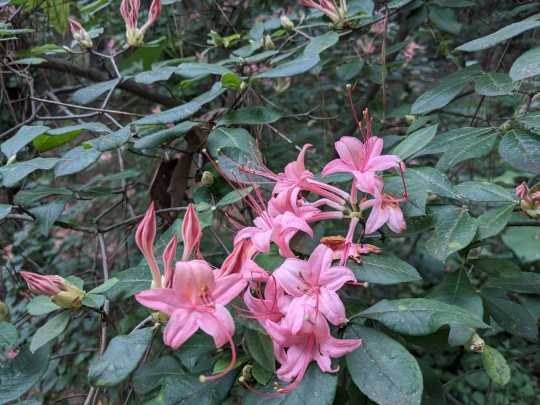
Rhododendron arborescens x prunifolium 'Summer Lyric' / 'Summer Lyric' Azalea at the Sarah P. Duke Gardens at Duke University in Durham, NC
#Rhododendron arborescens x prunifolium 'Summer Lyric'#Rhododendron arborescens#Rhododendron prunifolium#Azalea#Plumleaf azalea#Smooth azalea#Sweet azalea#Rhododendron#Native plants#Native flowers#Nature photography#Nativar#Flowers#Sarah P. Duke Gardens#Duke Gardens#Duke University#Durham#Durham NC#North Carolina
1 note
·
View note
Text

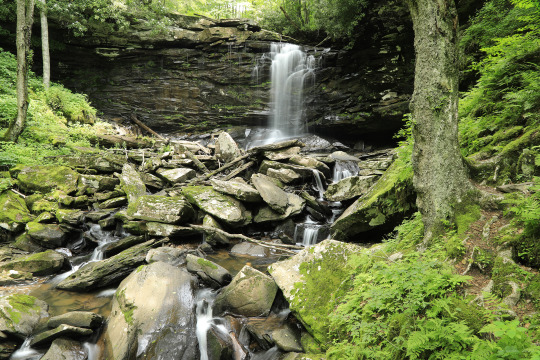
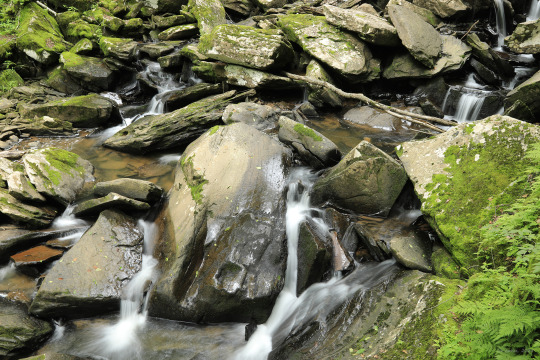
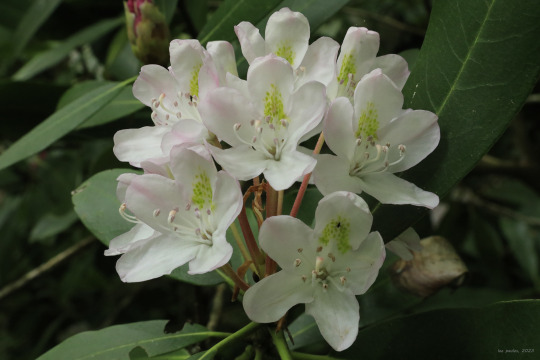


Falls of Hills Creek Scenic Area, a short detour off the Highland Scenic Highway in the Monongahela National Forest. The scenic area includes three beautiful waterfalls on Hills Creek, the lowest of which (top photo) is the second highest waterfall in West Virginia.
From top: the lower falls, which is 63 feet high; the middle falls, which is 45 feet high; great rhododendron (Rhododendron maximum) in bloom; a ravine hillside overspilling with ferns, hairy wood mint (Blephilia hirsuta), and wild hydrangea (Hydrangea arborescens); a gorgeous hairy wood mint, whose stacked, fragrant flower garlands lead to its other common name - hairy pagoda plant.
#appalachia#vandalia#west virginia#wildflowers#allegheny mountains#monongahela national forest#summer#wv route 150#falls of hills creek scenic area#falls of hills creek#highland scenic highway#great rhododendron#hairy wood mint#flora#wild hydrangea#smooth hydrangea
79 notes
·
View notes
Photo
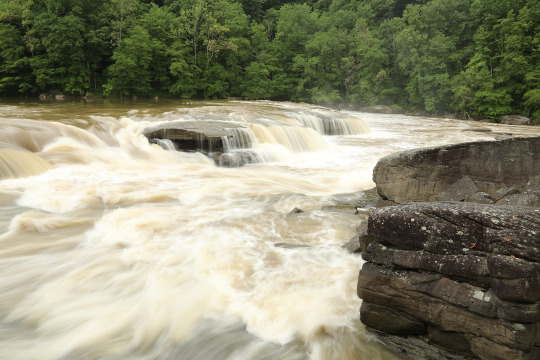
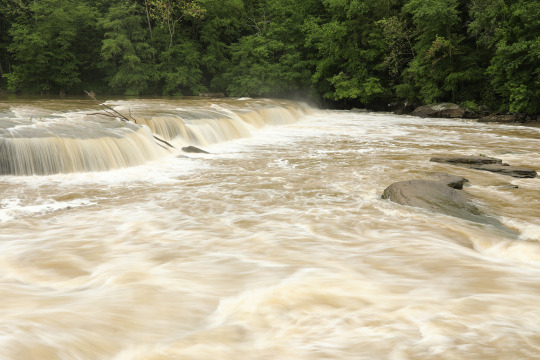
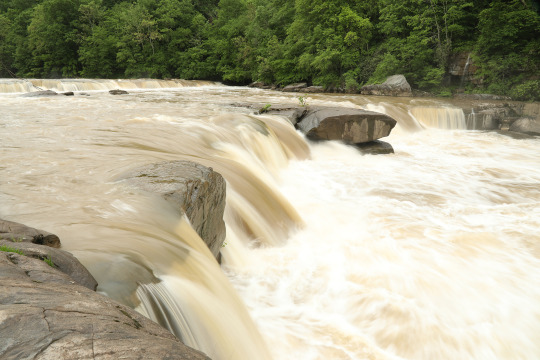


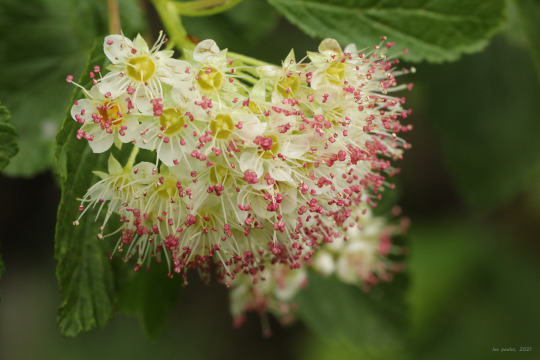


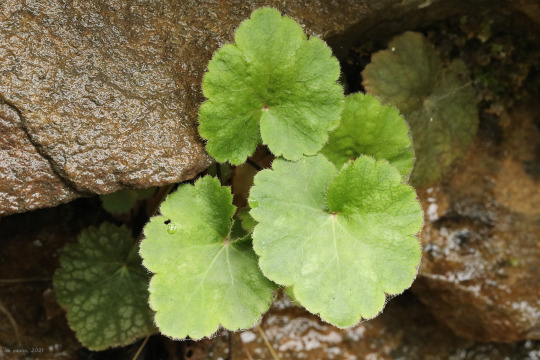

The terrible weather this weekend postponed my plans to get back up into the mountains until Monday, so I popped down to Valley Falls State Park instead to check out the arrowwood viburnum (Viburnum dentatum) and common ninebark (Physocarpus opulifolius), both now at peak bloom. These beautiful riparian shrubs put on quite a show at the end of May, soon to be followed by mountain laurel (Kalmia latifolia) and the stunning smooth azalea (Rhododendron arborescens), whose pure white flowers with pink-red stamens, lustrous green foliage, and large size make it my favorite azalea in the Appalachians. Other interesting stuff in bloom yesterday included yellow star grass (Hypoxis hirsuta) and American alumroot (Heuchera americana), a rock-loving saxifrage whose numerous cultivars are grown in gardens throughout the world. The Tygart Valley River, swollen by heavy rainfall from this past week, stole the show, however, with its turbulent whitewater reaching the top of the surrounding rock outcrops in places. I was amused a bit by the park staff, who pootled dutifully around the grounds in their golf cart to make sure the tourists kept their distance from the river.
#appalachia#vandalia#west virginia#spring#flora#wildflowers#viburnum#arrowwood viburnum#physocarpus#common ninebark#eastern ninebark#hypoxis#yellow star grass#heuchera#american alumroot#valley falls state park#tygart valley river
68 notes
·
View notes
Photo
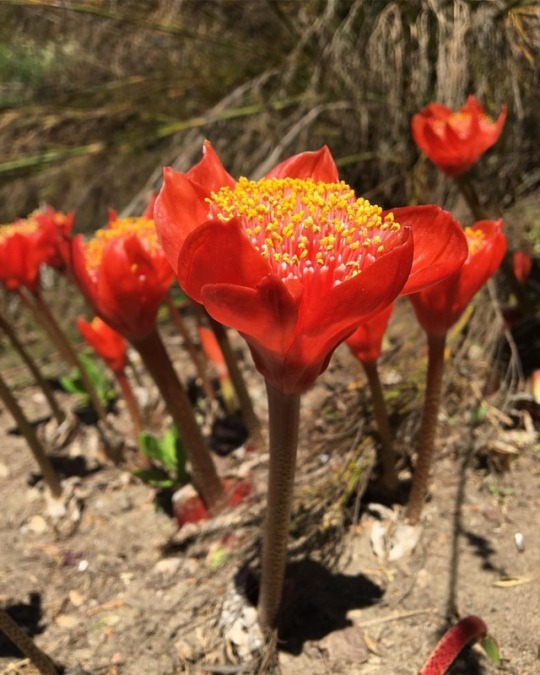
The Garden is free to all on the 2nd Tuesday every month. Please come and enjoy the September sunshine and late summer flowers today until 6pm. The paintbrush lilies (Haemanthus coccineus) in the South Africa collection, Geranium 'Rozanne' along the Great Meadow, Japanese anemones in the Temperate Asia and Rhododendron collections, and tree fuchsia (Fuchsia arborescens) in the Mesoamerican Cloud Forest collection are just a few of the many highlights at this beautiful time of year in San Francisco. Get out in the Garden! #sfbotanicalgarden #summerflowers #falliscoming (at San Francisco Botanical Garden) https://www.instagram.com/p/BnmATTvgeA7/?utm_source=ig_tumblr_share&igshid=12llunrtqylx4
1 note
·
View note
Photo
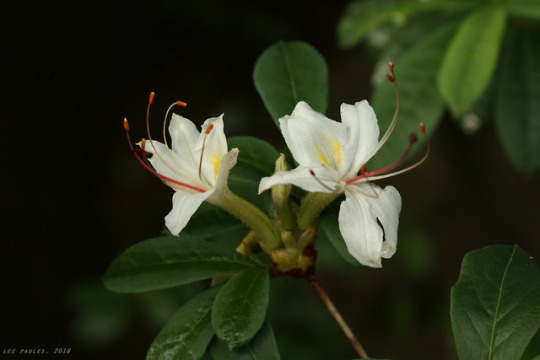
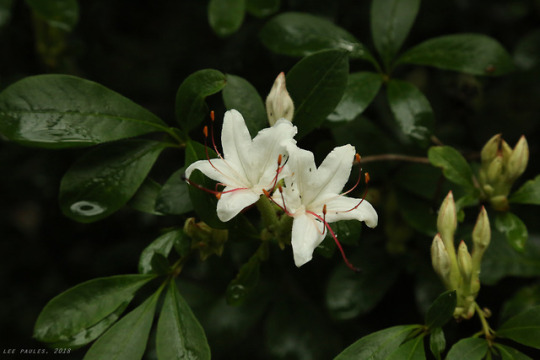
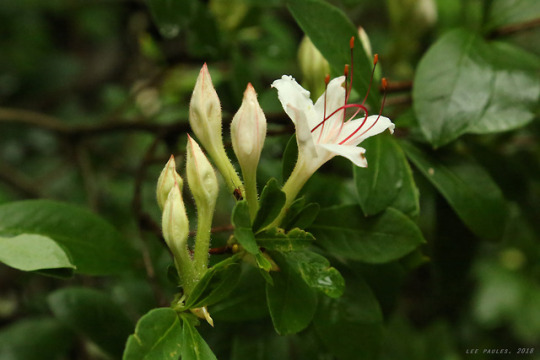

A tall, hardy, fast-growing shrub with a preference for the moist, well-drained soil of Appalachia’s partially-shaded stream banks and bogs, sweet azalea (Rhododendron arborescens) grows from eight to twelve feet tall with equivalent breadth. This azalea produces especially beautiful foliage: the elongated, ovate leaves are deep, glossy green in the spring and summer and turn to a striking crimson to purple shade in the fall. Shortly after the foliage fills out in the spring, clusters of three to six white to pink-tinged flowers with bright red stamens appear; they have a strong, appealing fragrance. Also known as smooth azalea because the underside of the leaves lack the hairs of other native azaleas, this lovely shrub often continues to bloom into early summer.
5 notes
·
View notes